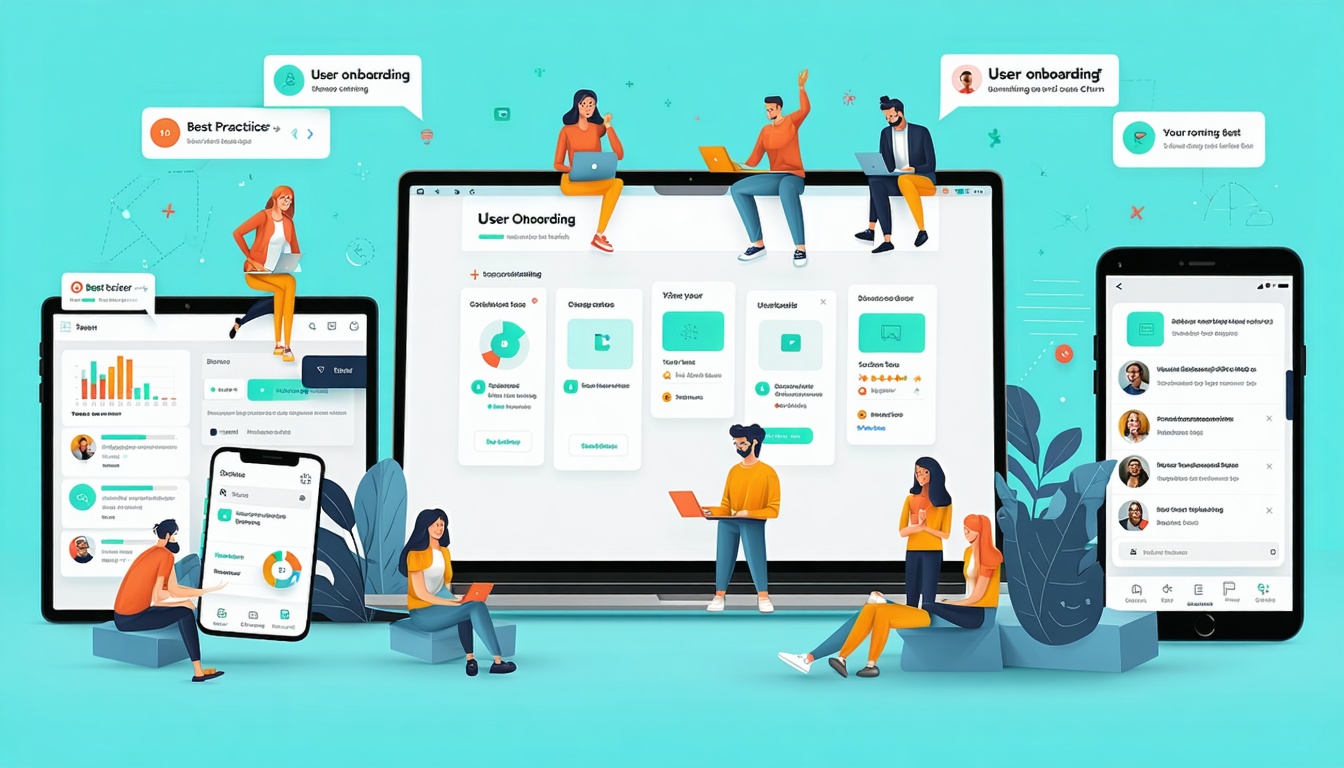The Importance of UI/UX Design
In the realm of design, UI (User Interface) and UX (User Experience) play pivotal roles in creating digital experiences that are not only visually appealing but also highly functional and user-friendly. Understanding the significance of UI/UX design and how it impacts businesses is paramount for achieving success in the digital landscape.
Understanding UI (User Interface)
UI design focuses on the look and feel of digital interfaces, encompassing elements like color schemes, typography, buttons, and overall layout. A well-crafted UI ensures that users can easily navigate through a website or application, leading to a seamless and enjoyable interaction.
Exploring UX (User Experience)
UX design, on the other hand, delves into the overall experience of users when interacting with a product or service. It involves understanding user behaviors, conducting research, creating user personas, and designing intuitive interfaces that meet the needs and expectations of the target audience.
The Impact of UI/UX Design on Businesses
The impact of UI/UX design on businesses cannot be understated. A well-executed UI/UX strategy can lead to increased customer satisfaction, improved user retention, and higher conversion rates. By creating intuitive interfaces and seamless user experiences, businesses can establish a strong online presence and build long-lasting relationships with their customers.
In fact, research has shown that companies that prioritize UI/UX design typically outperform their competitors in terms of key performance indicators such as customer loyalty and return on investment. By investing in UI/UX design, businesses can differentiate themselves in the market, attract more customers, and ultimately drive growth and success.
When businesses prioritize UI/UX design, they are not only enhancing the digital experience for their users but also setting themselves up for long-term success in an increasingly competitive landscape. By understanding the nuances of UI and UX, businesses can create digital solutions that are not only aesthetically pleasing but also highly functional, intuitive, and user-centric.
UI/UX Design Certification
Embarking on a journey to become proficient in UI/UX design often involves pursuing certification. Understanding what UI/UX design certification entails, the benefits it offers, and the various types available is essential for those looking to enhance their skills in this field.
What is UI/UX Design Certification?
UI/UX design certification is a validation of an individual’s knowledge and expertise in user interface and user experience design. It serves as a formal recognition of a professional’s proficiency in creating intuitive and user-friendly digital experiences. Certification programs typically cover a range of topics including design principles, usability, interaction design, and prototyping.
By obtaining UI/UX design certification, professionals demonstrate their commitment to continuous learning and skill development in the ever-evolving field of design. This certification can boost credibility, enhance career prospects, and provide a competitive edge in the job market.
Benefits of UI/UX Design Certification
There are numerous advantages to obtaining UI/UX design certification:
- Credibility: Certification validates proficiency and expertise in UI/UX design, instilling trust in clients and employers.
- Career Advancement: Certified professionals often have better job prospects and opportunities for career growth.
- Specialization: Certification allows individuals to specialize in UI/UX design, showcasing their dedication to the field.
- Networking: Certification programs often provide networking opportunities with industry experts, peers, and potential employers.
Types of UI/UX Design Certifications
In the realm of UI/UX design, there are several reputable certification programs that professionals can pursue to enhance their skills and credentials. Some common types of UI/UX design certifications include:
| Certification Name | Description |
|---|---|
| Nielsen Norman Group UX Certification | Focuses on usability, user research, and interaction design principles. |
| HFI Certified Usability Analyst | Emphasizes creating intuitive designs through user-centered methodologies. |
| Adobe Certified Expert | Validates proficiency in Adobe design tools, often specializing in UI/UX applications. |
| IDF (Interaction Design Foundation) Certification | Covers a wide range of design topics including user psychology, UX strategy, and design thinking. |
Each certification program has its own unique curriculum, requirements, and focus areas. Choosing the right certification will depend on individual career goals, areas of interest, and desired expertise in the UI/UX design field. For those looking to explore job opportunities upon certification completion, check out our article on UI/UX design jobs for insights into the industry landscape.
Choosing the Right UI/UX Design Program
When considering a UI/UX design program, it’s important to evaluate various factors to ensure it aligns with your goals and aspirations in the field of user interface and user experience design. Here, we will explore the key considerations, accreditation and recognition, and the importance of a comprehensive curriculum with hands-on experience.
Factors to Consider
Before enrolling in a UI/UX design program, it’s essential to assess several factors to determine the program’s suitability for your needs. Consider aspects such as:
- Program Structure: Review the structure of the program to ensure it covers a wide range of topics relevant to UI/UX design.
- Faculty Expertise: Investigate the qualifications and industry experience of the faculty members to ensure you receive quality education.
- Student Success Rate: Look into the success stories of past students to gauge the effectiveness of the program in preparing professionals for the industry.
Accreditation and Recognition
Opting for a UI/UX design program that holds accreditation and recognition in the field can significantly enhance the value of your certification. Accredited programs are more likely to adhere to industry standards and maintain a high level of educational quality. When choosing a program, look for accreditation from reputable organizations or institutions within the design industry.
Curriculum and Hands-On Experience
A robust curriculum coupled with hands-on experience is critical for gaining practical skills and knowledge in UI/UX design. A well-rounded curriculum should cover a variety of topics, including user research, interface design, usability testing, and information architecture. Additionally, hands-on experience through projects, workshops, or internships can provide valuable real-world exposure and help you develop a strong portfolio.
When assessing a UI/UX design program’s curriculum, consider the following key components:
| Curriculum Component | Description |
|---|---|
| User Research | Understanding user behavior and preferences to inform design decisions |
| Wireframing and Prototyping | Creating visual representations of user interfaces and interactions |
| Usability Testing | Evaluating designs with users to identify areas for improvement |
| Information Architecture | Organizing and structuring content to enhance user experience |
| Interaction Design | Designing interactive elements that facilitate user engagement |
| Visual Design | Implementing aesthetically pleasing and consistent design elements |
| Industry Tools and Software | Training on industry-standard tools and software for UI/UX design |
By carefully considering these factors, evaluating accreditation, and examining the curriculum and hands-on experience opportunities, you can make an informed decision when choosing the right UI/UX design program to further your career aspirations in the field. For more insights on UI/UX design career paths, explore our article on UI/UX design jobs.
Enhancing Your UI/UX Skills
When it comes to excelling in the field of UI/UX design, continuous learning and professional development play a crucial role in staying competitive and delivering high-quality design solutions. Here are key aspects to focus on for enhancing your UI/UX skills:
Continuous Learning and Professional Development
UI/UX design is a dynamic field that constantly evolves with technological advancements and changing user preferences. To stay relevant and up-to-date, professionals in this industry must engage in continuous learning and commit to ongoing professional development. This can involve attending workshops, enrolling in relevant courses, and participating in design forums to exchange ideas and insights with peers. By investing in continuous learning, designers can refine their skills, expand their knowledge, and adapt to emerging trends in the industry.
Networking Opportunities in the UI/UX Field
Networking is an essential component of career growth in the UI/UX design industry. Building a strong professional network can open doors to new opportunities, collaborations, and mentorship relationships. Networking events, industry conferences, and online design communities provide valuable platforms for connecting with fellow designers, potential clients, and industry influencers. By actively engaging in networking opportunities, UI/UX professionals can expand their professional circle, gain insights from others in the field, and foster meaningful partnerships.
Staying Updated with Industry Trends
To be a successful UI/UX designer, it’s essential to stay informed about the latest industry trends, best practices, and emerging technologies. Regularly consuming industry-related content such as design blogs, online publications, and design podcasts can help professionals stay abreast of current developments and innovative approaches in UI/UX design. Additionally, following key influencers and thought leaders in the field on social media platforms can provide valuable insights and inspiration for your own design projects. By staying updated with industry trends, designers can anticipate changes, adapt their strategies, and maintain a competitive edge in the dynamic world of UI/UX design.
Continuous learning, networking, and staying informed about industry trends are foundational elements for enhancing your UI/UX skills and positioning yourself as a proficient and sought-after designer in the field. By prioritizing professional growth and actively engaging with the UI/UX community, designers can not only expand their knowledge but also contribute to the advancement of the industry as a whole.
Transitioning to UI/UX Design
Making a career transition to UI/UX design can be a rewarding move for individuals looking to explore the dynamic world of digital design. This section highlights key tips to facilitate a successful transition, including building a strong portfolio and securing your first UI/UX design role.
Tips for Transitioning Careers to UI/UX Design
Transitioning careers to UI/UX design requires a strategic approach and a willingness to learn and adapt to new challenges. Consider the following tips to navigate this transition effectively:
- Enroll in UI/UX design courses online to develop your skills and gain industry-relevant knowledge.
- Seek out UI/UX design internship opportunities to acquire hands-on experience and expand your network.
- Stay updated with the latest UI/UX design trends and technologies to remain competitive in the field.
- Join UI/UX design workshops and attend networking events to connect with professionals in the industry.
Building a Strong Portfolio
A well-crafted portfolio plays a critical role in showcasing your skills and capabilities as a UI/UX designer. Your portfolio should include a diverse range of projects that demonstrate your design expertise and problem-solving abilities. Consider including the following elements in your portfolio:
- UI/UX design examples showcasing your design process, from initial research and ideation to final prototypes.
- UI/UX design wireframes and mockups that highlight your ability to create intuitive and user-friendly interfaces.
- Case studies that provide insight into your design thinking, decision-making process, and the impact of your designs on user experience.
Remember to keep your portfolio updated with your latest work and tailor it to showcase your strengths and areas of expertise.
Landing Your First UI/UX Design Role
Securing your first UI/UX design role can be a challenging yet fulfilling achievement. To increase your chances of success, consider the following strategies:
- Apply for entry-level UI/UX design jobs and internships to gain valuable hands-on experience.
- Prepare for UI/UX design interview questions by practicing common design challenges and communicating your design process effectively.
- Network with professionals in the field, attend industry events, and utilize online platforms to connect with potential employers.
By following these tips and actively engaging with the UI/UX design community, you can successfully transition to a rewarding career in UI/UX design and take the first steps towards building a successful and fulfilling professional journey in this exciting field.
Building a Successful UI/UX Agency
Establishing a UI/UX agency requires a blend of strategic planning, talent acquisition, and service delivery excellence. By focusing on various aspects such as brand identity, team composition, and service quality, you can position your agency for success in the competitive UI/UX market.
Establishing Your UI/UX Brand
Branding is a critical element in differentiating your UI/UX agency in a crowded marketplace. Developing a unique brand identity that reflects your agency’s values, design philosophy, and service offerings can attract clients who resonate with your vision. Consistency across your branding elements, from logo design to color palette, helps establish a cohesive and memorable brand presence. For more insights on branding in UI/UX design, explore our article on UI/UX design company branding.
Hiring the Right Talent
One of the key factors that contribute to the success of a UI/UX agency is the quality of talent it employs. Hiring skilled professionals with expertise in user interface design, user experience research, and interaction design is crucial for delivering exceptional results to clients. Creating a diverse team with complementary skill sets can foster innovation and drive creativity within your agency. To learn more about hiring strategies specific to UI/UX design roles, refer to our article on UI/UX design job roles and responsibilities.
| Role | Responsibilities |
|---|---|
| UI Designer | Develop visual elements of the user interface |
| UX Researcher | Conduct user research and usability testing |
| Interaction Designer | Design interactive elements and transitions |
Delivering Exceptional UI/UX Services
The cornerstone of a successful UI/UX agency is its ability to deliver high-quality services that meet and exceed client expectations. Ensuring a seamless client experience from project inception to completion involves effective project management, clear communication, and a focus on user-centric design principles. By prioritizing user needs and feedback throughout the design process, your agency can create intuitive and engaging digital experiences that drive user satisfaction and business success. Check out our article on best practices in UI/UX design service delivery for more guidance on delivering exceptional services.
By establishing a strong brand identity, assembling a talented team, and maintaining a commitment to service excellence, your UI/UX agency can thrive in a competitive landscape and build a reputation for creating innovative and user-centered digital solutions.
Looking to build something powerful for your business? At Kara Digital, we specialise in crafting high-performance solutions that drive real results. Whether you’re launching a cutting-edge mobile app or need a sleek, responsive website, our expert team is here to bring your ideas to life.











